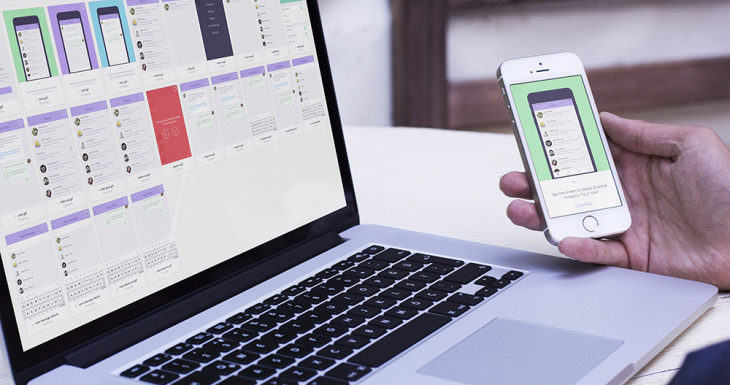
Here are the things you should consider before choosing an app prototyping tool.
Mobile app prototyping tools are a boon for designers.
They help designers to pick out the errors in the designs before moving on to later stages. Simply put, using app prototyping tool is just like taking a test drive of the app design, before the actual cycle begins. This way, these tools make process more time efficient and flexible to make changes in designs and coding.
Besides, they are great for explaining concepts to the clients. App Prototypes can be created for various stages of the design process to minimise the number of design repetitions. Designers can share real-time wireframes of the screen-designs to get timely feedback from their clients and stakeholders.
Someone has rightly said—
“if a picture is worth a thousand words, a prototype is worth a 1000 meetings.”
There is a wide array of prototyping tools available.
However, you should invest in the right one that can go well with your requirements. Will, it let you collaborate? Can it cut down feedback cycle? Is it user-friendly? Or how much does it cost?
Here are the things you should consider before choosing an app prototyping tool.
Can I Make Collaboration Easy?
A lack of collaboration among team members leads to unnecessary delays. So it is obvious to look for the solution in the tool. Check if the tool enables your teammates to share and upload their own versions of your design screens. It helps the team stay on the same page while contributing to the project in real time. This way, you can keep track of all changes while staying up to date with the project progress.
Can It Get Me Instant Feedback?
Mobile app prototyping tools shorten the review cycle so that you get instant feedback. With a working app design, you can place your clients, developers, designers, project managers and stakeholders in the same loop. They can view mobile app design and drop their feedbacks instantly. It cuts down the feedback cycle, and it is easy to access all people who need to assess the design screens.
Is it Easy to Learn?
It takes time to get familiar with a new prototype app, no matter how experienced designer you are. The new app may have a different interface than the one you have been using or are used to something different. Then, some newbies spend a lot of time getting through documentation and menus to get started.
If you have strict deadlines for the project, you can’t afford to invest a lot of time getting familiar with a new tool. It would be better if you have to spend a little time learning a tool. That’s why you should go for the one coming with an easy UI, familiar controls, and comprehensive documentation when needed.
Does It Support Different Levels of Fidelity?
Most designers choose the prototype tools on the level of fidelity they’re aiming for. It can be a simple concept sketch or a complicated Photoshop file. Design Fidelity has divided into three stages: low, medium and high. Low fidelity is the stage when you simply want to test the idea while Medium fidelity occurs when you are looking for the layout, interaction design, and information. High fidelity would mean visual design, animation, and micro-interactions. The key is here to make sure the tool help you achieve in each stage of the design fidelity.
Does it integrate with Your Other Tools?
Another thing to consider when choosing an app prototyping tool is how well it integrates with your workflow and frequently used tools or applications.
This is really useful if you are working under tight deadlines. It would be amazing if your prototyping tool could directly use the files produced in Photoshop, Illustrator or Sketch without requiring you to export the creations separately. In other words, the tool should enable you to export the images to the tool platform and upload it to a different tool to complete your prototype.
How Much Does it Cost?
Does the tool fit your budget? If you are budget conscious, look for the tools with the specific features you are looking for. There is no use to pay for the features you might not use. The optimal way is to use the tool according to the nature of your project. For example, there is no need to invest in a vector tool for a primary project that can be done with a much cheaper paper prototyping tool.
Conclusion:
App prototyping tools have made the complicated app designing easier and streamlined as well. With an excellent prototype tool, you not only create a perfect mobile app but also build transparency and team understanding. However, you can make the maximum of your app prototyping tool only when if you consider the factors like cost, compatibility, and collaboration before buying. A right prototype app helps you deliver the great app timely and efficiently.

